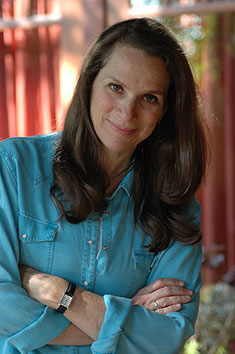She sits in front of his desk, listening in shock and in tears. He tells her that he could not do an amniocentesis because of the lack of amniotic fluid around the baby. The baby is alive, he says. He could see nothing wrong with it, but its prognosis is extremely poor. Without amniotic fluid, the fetus cannot grow, its lungs cannot develop, and it will be grossly deformed.
"How bad?" she asks. He cannot say exactly. His tests can provide information, but they cannot always offer a crystal-clear understanding of what it means. She will need to discuss this with her doctor, he says. But given his experience with such situations, he says he would recommend terminating the pregnancy.
"I cannot kill my baby," she says softly, walking out the door. In the days that follow, however, she will change her mind and opt for an abortion.
Tabsh drives back to UCLA. Down a dreary corridor and across from a series of doors with "Caution: Radioactive Materials" signs, his UCLA office is a nondescript space--a cubicle that, despite carpeting and a fresh coat of paint, remains virtually without personality. There are bookshelves, a desk, a chalkboard and not much else, save for the pictures of his four children--Ali, Dina, Kareem and Tarek.
Because he is both an intensely focused technician and a doctor whose expertise helps parents make life-and-death decisions, Tabsh is like two people. One is controlled and flinty. The other is playful and emotional, a person whom all the technological wizardry belies. That person, the one with an aching empathy for patients, tends to be downplayed, perhaps to help him distance himself from the intense emotions that surround him. Even he overlooks that side of himself at times. But not always.
His next patient has driven from Santa Barbara to see him for a second opinion. She is a 32-year-old housewife who exudes much warmth. But she can barely conceal her grief at having lost a pregnancy for the second time. In 1987, she went into premature labor and delivered a 4-pound baby who died. In recent weeks, her fetus died during her fourth month of pregnancy.
Now, she must decide when, or if, she should try again--risking further heartbreak without any assurances of a healthy outcome. She has come for some simple blood tests and for basic information. She asks whether the demise of both fetuses was related. How could this happen again? Why?
This is the currency of Tabsh's practice, the currency of loss. And of hope, too. He knows that he can provide courage to mothers who have suffered the trauma of a "bad outcome" or who, in years past, would never even have tried to become pregnant because of physical problems. But he also knows the limits of science, the reach of the heart.
Doctors still do not know precisely what causes things to go wrong during pregnancy, or why. They have learned that certain factors can put women at higher risk--having children later in life and high blood pressure, for example--but they have no understanding of what brings those factors into play. And, in any case, many women who develop problems in pregnancy don't fall into a known risk category.
Although the woman from Santa Barbara has a healthy child at home, she worries what another pregnancy will bring. There is talk of screening her for disease. But she's determined to try again. And psychologically? How is she feeling, he asks.
"I'm OK as long as I don't have to go to baby showers," she says.
"You should not conceive in the next six months," he advises. The tone is more comforting than patronizing. "The mourning process lasts about six months. Your body may be ready, but psychologically, it takes longer."
"I was hoping sooner," she confides. "But that's why I came here. I know you won't miss anything, Dr. Tabsh."
With that, he walks her to his door. And, awkwardly, he says goodby in a way that is at once professional and personal. Standing beside her, he places an arm over her shoulder and squeezes it. It's his version of a hug.
TABSH IS a handsome, bespectacled man with dark, questioning eyes and black hair offset by a shock of gray up front. More often than not, he wears a white doctor's coat that bears the name of a retired UCLA faculty member, which he covers with a strip of adhesive tape--a sign both of his quirky sense of humor and of his new-kid-on-the-block position at UCLA. At times, he looks more boyish than any graying man ought to look; at other times, especially when his glasses are off while he rubs his eyes, he looks monumentally tired.
Asked what prompted him to become a doctor, a half smile ducks across his face, and he replies: "My mother. She wanted a doctor in the family."
Brusque though polite, he grudgingly agreed to be interviewed for this article, and even then, scheduling time for a meeting proved almost impossible. The only time he would sit still long enough for an interview was when he had little choice--in an airplane on his way back from a meeting.



